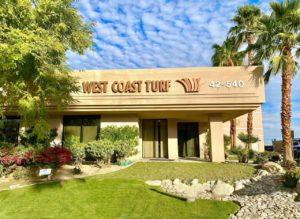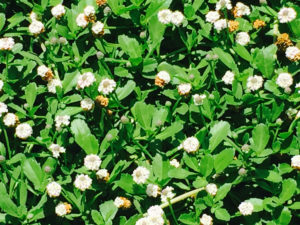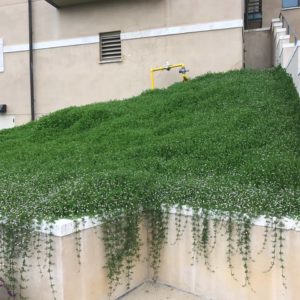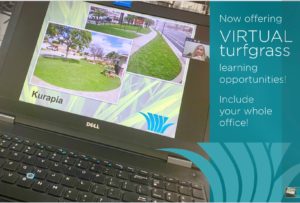Apr
Changes in Water Restrictions in California
 We have all read an article or two lately about the need to cut back on water used outdoors for lawns, trees, and shrubs. We are in a time when water supply is low, and we are caught between trying to keep our homes cooler by having a lawn and using too much water to keep it green. There will always be two sides to this issue as some see lawns and plants as a waste of water and others understand the benefit to the environment. As is the case in politics a blog post or article is not going to change one’s mind one way or the other but being opened to change and learning from each other will help us find a middle ground. Today I am going to talk about ways to reduce water for your turfgrass while keeping the grass healthy, and still providing the benefits to the environment.
We have all read an article or two lately about the need to cut back on water used outdoors for lawns, trees, and shrubs. We are in a time when water supply is low, and we are caught between trying to keep our homes cooler by having a lawn and using too much water to keep it green. There will always be two sides to this issue as some see lawns and plants as a waste of water and others understand the benefit to the environment. As is the case in politics a blog post or article is not going to change one’s mind one way or the other but being opened to change and learning from each other will help us find a middle ground. Today I am going to talk about ways to reduce water for your turfgrass while keeping the grass healthy, and still providing the benefits to the environment.
Grass selection is becoming more and more important. Let us start by examining the difference between warm and cool season grasses. Here in the southwest you can expect to use 30% more water by using a cool season grass when compared to a warm season grass. Cool season grasses grow best between 60-75 degrees whereas warm season grasses grow best between 90-105 degrees. Picking a warm season turfgrass for your area can save a significant amount of water and allow you to curtail water use longer during hot, dry periods. Swapping out a tall fescue lawn for a drought tolerant bermudagrass is much cheaper than you think and it will save water and put money back in your pocket.
The next part of grass selection is determining the right warm season grass for you. Breeders have been working overtime for years to come up with more drought tolerant grasses and they have been very successful. Some of the grasses on the market right now for reducing water are Kurapia (best drought tolerance), Tahoma 31 (second best), Tiftuf (3rd) Santa Ana, Paspalum, and Zoysia (coming soon to WCT). Kurapia is a ground cover that can be maintained on 50-60% replacement of evapotranspiration and even less if you want to slow the growth and put the grass into a state of dormancy during the hot summer. Studies have shown Tahoma 31 to use slightly less water than Tiftuf its closet competitor in the drought market and 20% less water than older bermudagrass varieties. Selecting the right turfgrass will enable your lawn to use less water and maintain drought tolerance through the hot summer.
How much water does grass need to survive? This is a loaded question, and you will get several different answers but on average 1.25” of water per week during the hottest part of the summer will keep your lawn healthy, thriving, and growing. Can you water less than 1.25” and have a good lawn? Absolutely! You could maintain your lawn with a once-a-week deep irrigation cycle during the summer months to keep the plant healthy and alive. The drought tolerant varieties will put your lawn into a state of pseudo dormancy, but the turf will still provide the same environmental benefits. I know for many having a green lawn is important but sometimes its not possible based on available water. In this situation I advise using a product like Endurant Turf Paint to give the lawn the desired color during periods of water reduction. Since the lawn will not be growing much the paint should last 45-60 days.
Raise your mowing height during the summer. The shorter you maintain your lawn, the shallower the root system will be for the plant. Most warm season grasses can be maintained between half and inch and one and a half inches. These are the optimal ranges but do not be afraid to raise the height to two inches and save even more water.
Water infiltration is extremely important. If your soil is a hard pan and water sheets off the ground every time you water, there is some work to do. Grass loves a deep watering which can happen all at once or broken up in the cycle/soak method. This means running 10-15 minutes and then letting it soak for an hour or more before running the second half of the cycle. If you cannot run more than a few minutes of water without runoff its time to aerate and open the soil. This will relieve compaction and allow water to freely get into the soil.
Irrigation systems save time, water, and money. Putting in a smart timer that calculates evapotranspiration and tests soil moisture will help keep water use down and drastically lower your budget. These smart devices calculate real time weather, plant needs, and soil data. You can set them to use 70-80% of ET to keep your lawn growing. Many cities offer free irrigation clocks and soil moisture monitor tools so check with your city and see what is available.
There are so many great options on the market right now to save water and allow you to have a healthy lawn. Remember that a lawn does not have to be bright green to be healthy. No one wants to give up their lawn and no one will have to if we all use some conservation methods. If you have any questions on any varieties send me an email and I will be happy to help you out. For more information about us, visit: westcoastturf.com
Click here for:
-Jay, Mr. Wise Grass
Comments Off on Changes in Water Restrictions in CaliforniaMar
When Should I Start to Spring Transition My Lawn to Bermudagrass?
I’d like to go over some common questions I have received through the blog in the last few weeks and see if it can help others with some of the same concerns. I always encourage everyone to send over your lawn questions and I will get back to you as soon as I can.
When should I start to transition my lawn back to bermudagrass?
I always recommend starting the process slowly in March and ramping up in April so your lawn has transitioned by May. I know that was a mouth full, but the truth is it’s not a short process unless you chemically transition your lawn. In March its ideal to start to gradually lower your mowing height and remove some of the turf canopy. This is not a scalp, this is lowering the height so the bermudagrass can breathe and get some sunlight. By mid-March you should be mowing two times per week and starting to see some thinning in the ryegrass. By thinning I mean bermudagrass leaves are starting to show between the ryegrass blades. Currently there is no need to fertilize the ryegrass, its time to back off on nutrition until bermudagrass season. In early April you can lightly verticut or even lightly power rake the lawn to remove some of the ryegrass giving way to bermudagrass. The more sunlight you can get in the grass, the faster you will transition. If the ryegrass remains extremely thick and lush you can expect it to provide excessive spring shade slowing down the bermudagrass. When soil temperatures reach 64 degrees (around April 15th) go ahead and apply ammonium sulfate 21-0-0 at 5 pounds per 1000 SF to jump start your bermudagrass. Continue mowing two times per week and gradually lowering your heights until you see the bermudagrass take over.
Spring Transition, keep lowering the height…..
Can I still put down pre-emergent for broadleaves?
Most of the grassy weeds and broadleaves are now germinating so putting down the preemergent will not yield the results you’re looking for. At this juncture its best to spot spray weeds depending on the type. Make sure the product is labeled for the weed you’re trying to control and can safely be used on bermudagrass. Grassy weeds use different chemicals than broadleaves and not all chemicals are safe and effective so check with specialty stores for better products.
What can I do to repair the urine damage from my dogs? Read the rest of this entry »
Comments Off on When Should I Start to Spring Transition My Lawn to Bermudagrass?Aug
KURAPIA GROUNDCOVER SOD BACK IN STOCK!
Great news! We now have our Kurapia drought tolerant groundcover sod back in stock in California and Arizona!
What they’re saying about Kurapia…….
- “After extensive research and investigation, Kurapia was chosen for the following reasons: aesthetics, growth habit, drought tolerance, erosion control, weed suppression, disease resistance, maintenance aspects, and foremost and most importantly–water conservation–with the reduction of water usage. Kurapia met all of these expectations and more. I believe Kurapia will revolutionize the landscape industry
Mark Runk
G&R Engineering
El Cajon, CA
Comments Off on KURAPIA GROUNDCOVER SOD BACK IN STOCK!
Aug
Attention Landscape Architects! We Are Now Offering ZOOM Educational Opportunities!
These are trying times, but that doesn’t mean we have to stop learning. West Coast Turf is now offering virtual Zoom educational opportunities for landscape architects!
Include your whole office! Find out about the newest varieties including the exciting Kurapia sod natural turfgrass alternative ground cover. It’s drought tolerant, unique, versatile, and beautiful. There are some great new native grasses that look spectacular. We also can update you on our old standbys such as West Coaster Fescue, Santa Ana, Bandera Bermuda, and Tifgreen that are tried and true.
Call or e-mail us today to schedule your presentation–760/340-7301 or danielle@westcoastturf.com. The presentation takes about an hour, and we are able to answer any questions you might have on natural turfgrass varieties or Kurapia sod ground cover for your next project.
We miss you and are excited to “see” you again virtually! Contact us today!
Comments Off on Attention Landscape Architects! We Are Now Offering ZOOM Educational Opportunities!




